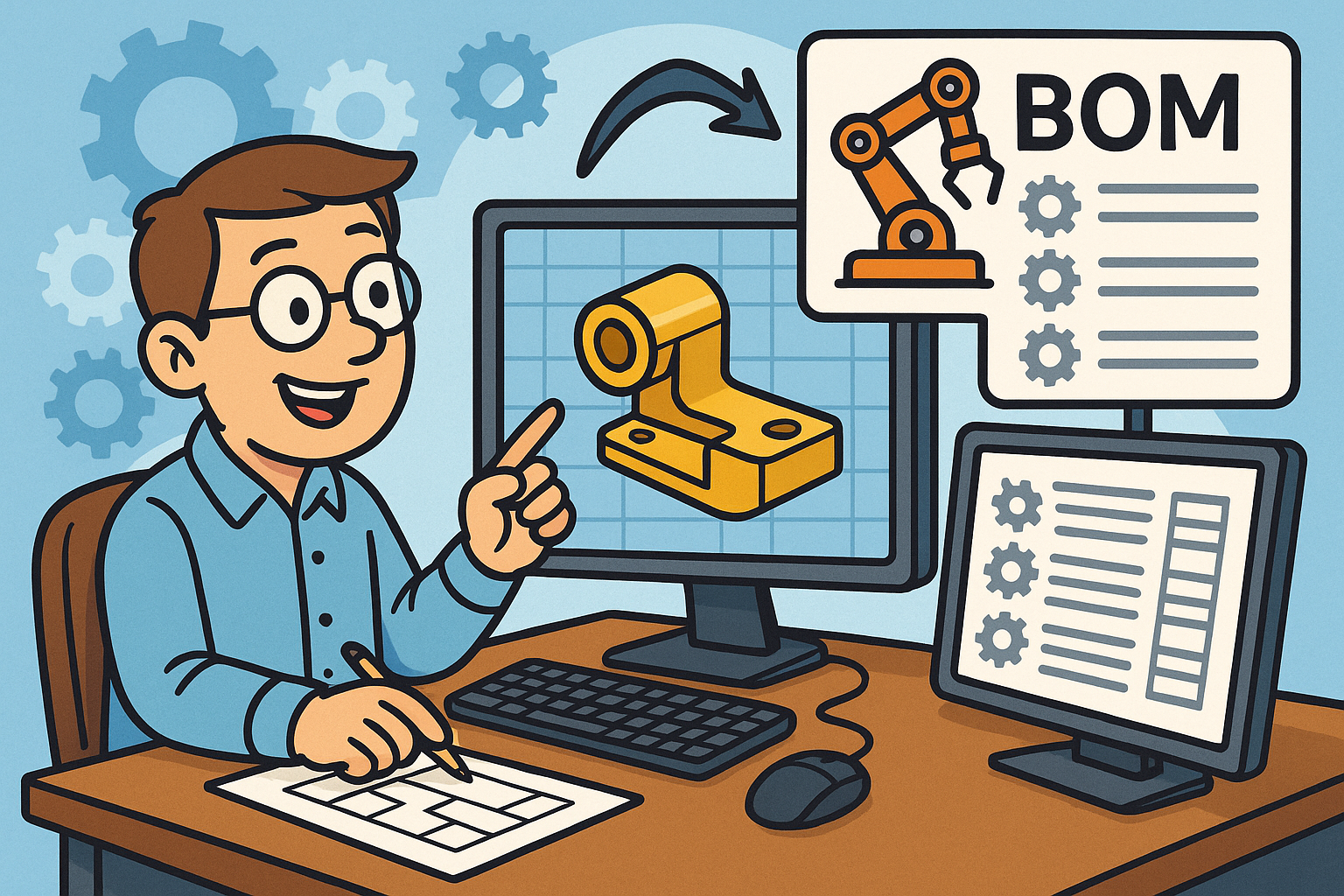Your Cart is Empty
Customer Testimonials
-
"Great customer service. The folks at Novedge were super helpful in navigating a somewhat complicated order including software upgrades and serial numbers in various stages of inactivity. They were friendly and helpful throughout the process.."
Ruben Ruckmark
"Quick & very helpful. We have been using Novedge for years and are very happy with their quick service when we need to make a purchase and excellent support resolving any issues."
Will Woodson
"Scott is the best. He reminds me about subscriptions dates, guides me in the correct direction for updates. He always responds promptly to me. He is literally the reason I continue to work with Novedge and will do so in the future."
Edward Mchugh
"Calvin Lok is “the man”. After my purchase of Sketchup 2021, he called me and provided step-by-step instructions to ease me through difficulties I was having with the setup of my new software."
Mike Borzage
Voice Command Integration: Transforming Modern Design Workflows and User Interaction
July 12, 2025 7 min read


Overview of Voice Command Evolution in Modern Design Workflows
The adoption of voice command features in design tools has experienced a significant evolution, reflecting the increasing need for an intuitive and hands-free interaction mechanism in creative and technical industries. As modern design workflows evolve, designers and engineers are continuously seeking ways to minimize disruptive manual operations while unlocking a higher degree of efficiency, creativity, and safety. This trend is driven by the convergence of advanced speech recognition algorithms, refined natural language processing techniques, and ever-improving machine learning models. In addition, the pervasive integration of smart devices and AI-based assistants in everyday tasks has paved the way for the adoption of **voice command functionalities** in professional design environments. By leveraging hands-free interaction, professionals can focus their cognitive resources on complex design problems, reduce the physical strain associated with repetitive keyboard and mouse operations, and foster an inclusive work environment that accommodates various ergonomic needs.
Context and Rationale Behind Voice-Enabled Design
Within the realm of product visualization, additive manufacturing, and architectural design, the integration of voice command technology illustrates a transformative shift in standard practices. The technology is now robust enough to accurately capture and interpret user commands in noisy work environments, facilitating the use of design software even in challenging conditions where traditional input methods may be impractical. By incorporating voice control into existing UI/UX frameworks, designers are empowered to seamlessly manipulate complex digital models and parameters without the need for physical input devices. Moreover, this evolution has been paralleled by a widespread market shift towards more accessible and inclusive design solutions, ensuring that diverse populations can effectively participate in creative endeavors. Key developments in this field include the enhancement of **natural language interaction** and streamlined customization options which enable designers to seamlessly activate specialized tools, modify design parameters, and navigate intricate software menus with simple voice commands.
Emergence and Future Direction
As voice command integration continues to mature, the overall impact on the design landscape is becoming increasingly profound. Industry leaders recognize that the future of design software lies in the delicate balance between automation and human creativity, where intuitive voice commands not only simplify tasks but also inspire new methods of creative expression and problem-solving. Early integration of these technologies has been shown to reduce the learning curve associated with complex design software, leading to faster skill acquisition and an accelerated iterative design process. Overall, this evolution represents a promising future where enhanced user interaction and **hands-free operation** can redefine the relationship between designers and technology. The ongoing enhancements in machine learning and algorithm accuracy ensure that voice commands will eventually become as reliable as more established input mechanisms, truly ushering in a new era in digital design.
Technical Implementation and Integration of Voice Command Technologies
The technical underpinnings required to integrate voice command features into design software rely on a synergy of several transformative technologies. At the heart of these implementations are advanced speech recognition algorithms that facilitate the conversion of voice inputs to digital commands and subsequent execution of design-related operations. Such systems utilize deep learning models that have been trained on extensive datasets, ensuring high accuracy even in less-than-ideal acoustic conditions. Additionally, **natural language processing** (NLP) plays a crucial role in understanding the context and semantics of user commands. Beyond the technical mechanics, the integration strategy often focuses on embedding the voice command functionalities directly into existing user interfaces, thereby minimizing additional user learning curves and promoting a seamless workflow. This approach has become vital as complex design software applications demand both precision and efficiency in daily operations.
Core Technologies Driving the Integration
At the core of every voice-enabled solution are several key technologies that work in unison:
- Speech Recognition Algorithms: These processes convert audio input into text by analyzing the speech waveform and matching it with pre-trained phonetic patterns.
- Natural Language Processing (NLP): NLP systems are responsible for understanding the syntax and semantics of the spoken commands, facilitating context-aware responses.
- Machine Learning Models: These models continuously improve the system’s accuracy by adapting to user-specific speech patterns and evolving design terminologies.
Integration Strategies and Functionalities
The overall integration strategy for voice-powered interfaces involves a combination of meticulous UI re-design, robust backend architecture, and diligent system testing. This often involves the following steps:
- Developing a **modular voice command engine** that integrates with the main software’s architecture without introducing significant latency.
- Implementing adaptive learning algorithms that allow the voice command system to better understand and adapt to the unique accents, dialects, and terminologies of its users.
- Embedding fallback protocols and manual overrides to ensure that traditional input mechanisms remain available for critical operations.
- Ensuring cross-platform compatibility so that designers working on different operating systems and devices can benefit from the unified voice command capabilities.
Impact on Design Processes and User Interaction
The integration of voice command features into design software has yielded substantial improvements in overall workflow efficiency and user satisfaction. By automating repetitive commands, designers can devote more time to creative problem-solving and high-level decision making. In modern design processes, **hands-free operation** enables professionals to interact with complex digital environments in ways that were previously unattainable. This development has been especially beneficial in environments where continual manual input can lead to fatigue or impede rapid iterative changes. Advanced voice recognition systems now support functionalities that allow users to activate design tools, modify parameters continuously, or navigate large-scale digital canvases with just a few spoken words.
Enhancing Efficiency through Automation
With the added benefit of automating mundane tasks, designers have experienced enhanced productivity and reduced error rates. The ability to articulate design commands verbally, without the interruption of searching and selecting tools manually, streamlines the workflow significantly. Some of the additional benefits include:
- Reduction in repetitive strain injuries due to diminished reliance on keyboards and mice.
- Accelerated design iteration cycles as tools and functions are accessed in mere seconds.
- Minimized context switching between different tasks, allowing for a more focused creative environment.
Improving Accessibility and Ergonomics
Beyond efficiency enhancements, the introduction of voice command interfaces in design software represents a significant step forward in terms of accessibility and ergonomic benefits. Many traditional input methods were not designed with long-term use in mind and can frequently lead to repetitive motion injuries or other physical strains. By contrast, voice-based systems eliminate the repetitive manual operation, reducing the reliance on hands-on interaction, and paving the way for a more inclusive design environment. This is particularly beneficial in scenarios where design teams operate in physically demanding settings, or where individuals with disabilities require alternative interaction modalities for creative work. Furthermore, these systems democratize design processes by mitigating language barriers and enabling smoother interactions through **context-driven commands** that adjust to user preferences and working styles. Accessibility improvements are often supplemented by interface customizations allowing users to define tailored command vocabularies and frameworks that resonate with their specific design terminologies. Ultimately, these enhancements in ergonomics not only improve user satisfaction and productivity but also demonstrate a bold step toward making state-of-the-art technology available to a wider range of users.
Conclusion: The Future of Voice Command in Design Software
As the landscape of digital design continues to evolve, the integration of voice command features stands out as one of the most innovative and transformative trends. The convergence of advanced speech recognition, natural language processing, and machine learning has fundamentally reshaped the way designers interact with their tools. Embracing **hands-free operation** not only enhances efficiency by automating repetitive tasks but also fosters an inclusive, ergonomic, and accessible work environment. The technical strategies that enable this integration have laid a robust foundation for further innovations in both UI/UX design and backend system architecture. Moreover, as these systems gain refinement with continuous user feedback and technological advancements, they are poised to revolutionize not only the design industry but also adjacent fields such as product visualization, additive manufacturing, and engineering computation.
Benefits and Potential Challenges
The benefits of this evolution include a significant improvement in workflow speed, a reduction in manual intervention, and the empowerment of creative professionals through more natural interaction patterns. Simultaneously, designers must be prepared to address potential challenges such as ensuring consistent command recognition in diverse acoustic environments, protecting user data through robust security measures, and integrating voice functionalities with legacy systems without compromising legacy workflows. It remains crucial that developers continue to invest in enhancing the accuracy and adaptability of these systems. Future improvements in **machine learning accuracy** will lead to more finely tuned responders that can understand nuanced commands across various design contexts.
Future Trends and Final Thoughts
Looking forward, there is a strong possibility that voice command integrations will be further customized to suit niche segments and specialized design disciplines. Research into personalized command recognition and adaptive interfaces is expected to yield systems that can adjust dynamically to the preferences and styles of individual users. Moreover, as industries increasingly demand remote and collaborative workflows, the convenience of voice commands will undoubtedly play a pivotal role in facilitating real-time, hands-free communication among geographically dispersed design teams. While challenges remain, the overall trajectory is clear – voice command technology is ushering in a new era of interaction that has the power to redefine the creative process and empower professionals in unprecedented ways. In summary, the opportunities presented by voice command integration have set the stage for a transformative future in design software, promising enhanced productivity, improved ergonomics, and a richer creative experience.
Also in Design News

Revolutionizing CAD: Automated BOM Generation for Enhanced Precision and Efficiency
August 28, 2025 10 min read
Read More
Cinema 4D Tip: Effective Use of the Morph Tag in Cinema 4D for Smooth Shape Transitions
August 28, 2025 3 min read
Read MoreSubscribe
Sign up to get the latest on sales, new releases and more …



